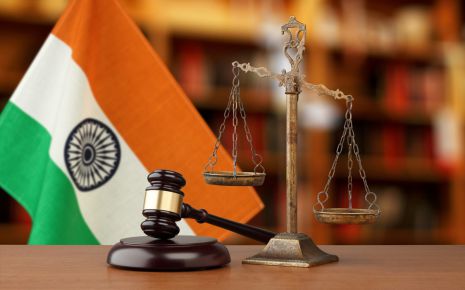American Constitution: Key Features, Strengths, Weaknesses, Its Impact on Indian Constitution And Evaluation
In 1788, the United States ratified the American Constitution, a crucial
legal document that sets forth the organization, abilities, and boundaries of
the federal government. This document also protects the liberties and
entitlements of its inhabitants by outlining the scope of governmental power,
dividing authority among branches, and specifying essential rights.
Key Features:
In 1787, the American Constitution was drafted and then ratified in 1788, encompassing several key features that have greatly influenced the nation's governance and legal structure.
The enduring strength of the American Constitution lies in its well-crafted framework for promoting democratic governance and safeguarding individual freedoms. Designed with foresight and adaptability, it establishes a system of checks and balances among the executive, legislative, and judicial branches, promoting stability and preventing the concentration of power.
Its Bill of Rights guarantees essential rights such as freedom of speech, religion, and assembly, serving as a safeguard against government overreach and upholding the rule of law. Moreover, the Constitution's ability to adapt through amendments and judicial interpretation has allowed it to evolve alongside the changing needs of society, ensuring its continued relevance and resilience as a guiding document for the nation.
Weaknesses:
The deficiencies of the American Constitution primarily originate from its historical background and changing societal demands. Despite its enduring impact, the document has faced criticism for certain inherent imperfections, including vague language that has led to contentious interpretations, such as debates over the extent of individual rights and the balance of power between the federal government and states.
Furthermore, its original structure perpetuated injustices, most notably the practice of slavery and the exclusion of marginalized groups from full citizenship rights, necessitating subsequent amendments and legal battles to address these shortcomings. In addition, the Constitution's reliance on a complex system of checks and balances has, at times, resulted in government gridlock, impeding effective decision-making and responsiveness to current challenges. These weaknesses highlight the ongoing necessity for constitutional reform and reinterpretation to ensure that the ideals of justice, equality, and democratic governance are fully realized.
Impact of American Constitution on Indian Constitution:
The Indian Constitution has been greatly impacted by the American Constitution, which is the oldest and most enduring written charter in existence. Some significant elements that have been borrowed include Fundamental Rights, Judicial Review, the Preamble, Judicial Independence, the procedure for Removal of High Court and Supreme Court Judges, as well as the distinct roles of the President and Vice President of India.
The Indian Supreme Court exercises the power of judicial review, allowing it to review the constitutionality of laws and policies, thereby serving as a protective measure for the Constitution against potential infringements by any branch of government. This authority ensures the preservation of constitutional principles and prevents the misuse of power within the Indian governmental structure.
Evaluation:
The American Constitution is a seminal document in the realm of constitutional law, renowned for its lasting impact on democratic governance and individual rights. Its innovative structure, which includes a system of checks and balances between the executive, legislative, and judicial branches, has promoted stability and prevented the consolidation of authority. Additionally, the Constitution's Bill of Rights has served as bedrock for safeguarding essential freedoms, such as the freedom of speech, religion, and assembly, establishing a strong framework for civil liberties.
Nonetheless, criticism has emerged regarding its adherence to originalist interpretation versus adapting to shifting societal norms, as well as its historical oversights and the ongoing struggle to address issues of equality and justice for marginalized communities. However, its ability to be amended and interpreted by the courts has allowed it to evolve and continue to serve as a core document guiding the principles of American governance.
Written By: Md.Imran Wahab, IPS, IGP, Provisioning, West Bengal
Email: [email protected], Ph no: 9836576565
Key Features:
In 1787, the American Constitution was drafted and then ratified in 1788, encompassing several key features that have greatly influenced the nation's governance and legal structure.
- Federalism: The Constitution establishes a federal system of government that divides powers between the national and state governments. This arrangement allows for a balance of authority, with both centralization and decentralization, ensuring a blend of national unity and state autonomy.
- Separation of Powers: The Constitution implements the separation of powers, dividing governmental authority into three branches: the legislative, executive, and judicial. This division serves as a safeguard against tyranny, preventing any one entity from holding too much power.
- Bill of Rights: Bill of Rights comprised of the first ten amendments, guarantees fundamental freedoms and protections for individuals, including freedom of speech, religion, and assembly, as well as due process of law and protection against unreasonable searches and seizures.
- Checks and Balances: The Constitution establishes checks and balances, allowing each branch of government to monitor and limit the powers of the other branches. For example, the President can veto legislation passed by Congress, but Congress can override the veto with a two-thirds majority vote.
- Popular Sovereignty: The Constitution begins with the phrase 'We the People,' emphasizing that government derives its authority from the consent of the governed. This principle of popular sovereignty highlights the democratic foundation of the American system of government.
- Amendment Process: The Constitution contains a formal procedure for modifying its provisions through the amendment process, enabling adjustments to be made to accommodate shifting societal needs and values. A proposed amendment can be initiated by a two-thirds majority vote in both the House and the Senate, or if two-thirds of the States demand it, through a convention convened specifically for this purpose. The amendment must subsequently be approved by three-fourths of the State legislatures or three-fourths of the conventions held in each State for ratification.
- Judicial Review: Although not explicitly stated in the Constitution, the principle of judicial review, established by the landmark case Marbury v. Madison (1803), grants the judiciary the authority to interpret the Constitution and declare laws or executive actions unconstitutional.
- Electoral College: The Electoral College is outlined in the Constitution as the method for selecting the President and Vice President of the United States. Under this system, each state chooses electors who then cast votes for the President and Vice President, with the number of electors for each state based on its representation in Congress.
- Supremacy Clause: Included in the Constitution is the supremacy clause, which asserts federal law as superior to state law in cases of conflict. This ensures consistency and uniformity in the application of laws throughout the nation.
- Constitutional Flexibility: The Constitution is a dynamic document that permits interpretation and evolution over time. While providing a stable foundation for governance, it also incorporates mechanisms for change to meet the needs of a constantly evolving society.
The enduring strength of the American Constitution lies in its well-crafted framework for promoting democratic governance and safeguarding individual freedoms. Designed with foresight and adaptability, it establishes a system of checks and balances among the executive, legislative, and judicial branches, promoting stability and preventing the concentration of power.
Its Bill of Rights guarantees essential rights such as freedom of speech, religion, and assembly, serving as a safeguard against government overreach and upholding the rule of law. Moreover, the Constitution's ability to adapt through amendments and judicial interpretation has allowed it to evolve alongside the changing needs of society, ensuring its continued relevance and resilience as a guiding document for the nation.
Weaknesses:
The deficiencies of the American Constitution primarily originate from its historical background and changing societal demands. Despite its enduring impact, the document has faced criticism for certain inherent imperfections, including vague language that has led to contentious interpretations, such as debates over the extent of individual rights and the balance of power between the federal government and states.
Furthermore, its original structure perpetuated injustices, most notably the practice of slavery and the exclusion of marginalized groups from full citizenship rights, necessitating subsequent amendments and legal battles to address these shortcomings. In addition, the Constitution's reliance on a complex system of checks and balances has, at times, resulted in government gridlock, impeding effective decision-making and responsiveness to current challenges. These weaknesses highlight the ongoing necessity for constitutional reform and reinterpretation to ensure that the ideals of justice, equality, and democratic governance are fully realized.
Impact of American Constitution on Indian Constitution:
The Indian Constitution has been greatly impacted by the American Constitution, which is the oldest and most enduring written charter in existence. Some significant elements that have been borrowed include Fundamental Rights, Judicial Review, the Preamble, Judicial Independence, the procedure for Removal of High Court and Supreme Court Judges, as well as the distinct roles of the President and Vice President of India.
The Indian Supreme Court exercises the power of judicial review, allowing it to review the constitutionality of laws and policies, thereby serving as a protective measure for the Constitution against potential infringements by any branch of government. This authority ensures the preservation of constitutional principles and prevents the misuse of power within the Indian governmental structure.
Evaluation:
The American Constitution is a seminal document in the realm of constitutional law, renowned for its lasting impact on democratic governance and individual rights. Its innovative structure, which includes a system of checks and balances between the executive, legislative, and judicial branches, has promoted stability and prevented the consolidation of authority. Additionally, the Constitution's Bill of Rights has served as bedrock for safeguarding essential freedoms, such as the freedom of speech, religion, and assembly, establishing a strong framework for civil liberties.
Nonetheless, criticism has emerged regarding its adherence to originalist interpretation versus adapting to shifting societal norms, as well as its historical oversights and the ongoing struggle to address issues of equality and justice for marginalized communities. However, its ability to be amended and interpreted by the courts has allowed it to evolve and continue to serve as a core document guiding the principles of American governance.
Written By: Md.Imran Wahab, IPS, IGP, Provisioning, West Bengal
Email: [email protected], Ph no: 9836576565
Law Article in India
Legal Question & Answers
Lawyers in India - Search By City
LawArticles
How To File For Mutual Divorce In Delhi

How To File For Mutual Divorce In Delhi Mutual Consent Divorce is the Simplest Way to Obtain a D...
Increased Age For Girls Marriage

It is hoped that the Prohibition of Child Marriage (Amendment) Bill, 2021, which intends to inc...
Facade of Social Media

One may very easily get absorbed in the lives of others as one scrolls through a Facebook news ...
Section 482 CrPc - Quashing Of FIR: Guid...

The Inherent power under Section 482 in The Code Of Criminal Procedure, 1973 (37th Chapter of t...
The Uniform Civil Code (UCC) in India: A...

The Uniform Civil Code (UCC) is a concept that proposes the unification of personal laws across...
Role Of Artificial Intelligence In Legal...

Artificial intelligence (AI) is revolutionizing various sectors of the economy, and the legal i...








Please Drop Your Comments